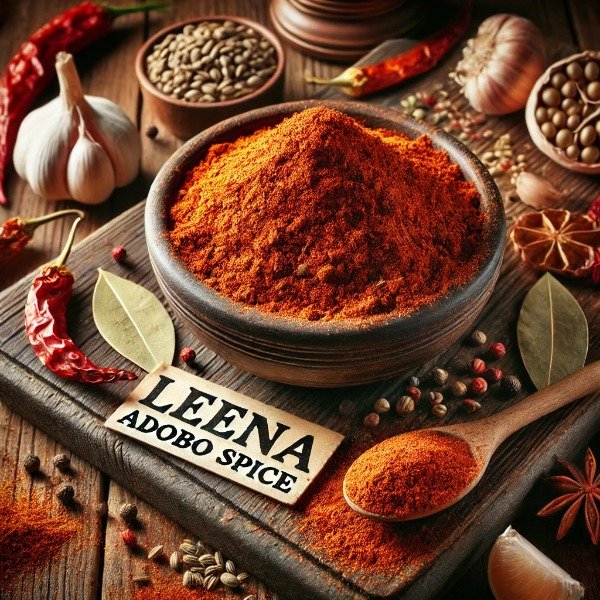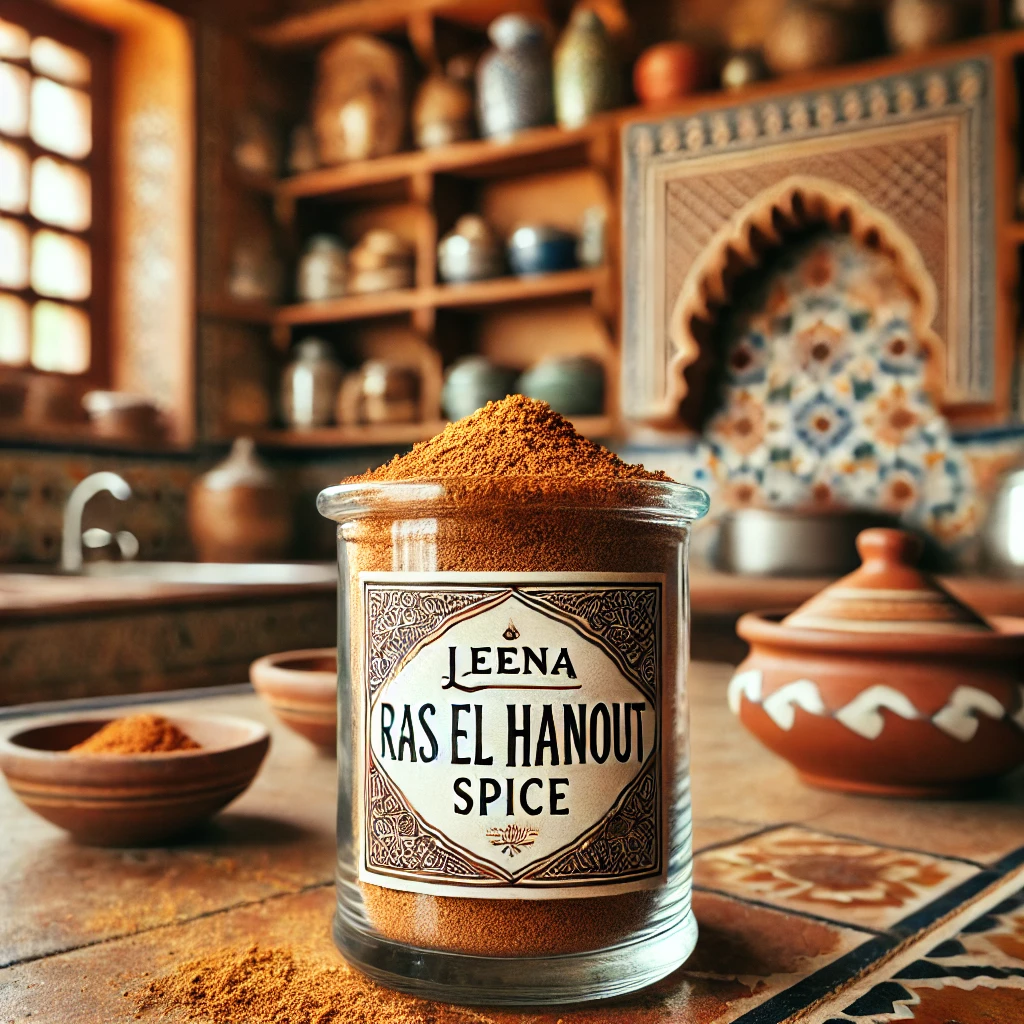Greek Oregano vs. Mexican Oregano: Key Differences Every Cook Should Know
Table of Contents
- Introduction
- Key Takeaways
- What is Greek Oregano
- What is Mexican Oregano
- Physical Differences
- Flavors
- Recipes
- FAQs
- Conclusion
Introduction
Oregano is one of the most beloved herbs in kitchens around the world, but not all oregano is created equal. Greek oregano and Mexican oregano, though they share a name, come from completely different plants and bring unique flavors, aromas, and culinary personalities to your dishes. Greek oregano delivers earthy, herbaceous warmth that’s perfect for Mediterranean classics like pizza, pasta, and Greek salads. Mexican oregano, on the other hand, packs a bold, citrusy punch that elevates chili, salsas, and hearty Latin American meals. Understanding the key differences between these two oreganos can transform your cooking, helping you achieve authentic flavors and make every dish shine.
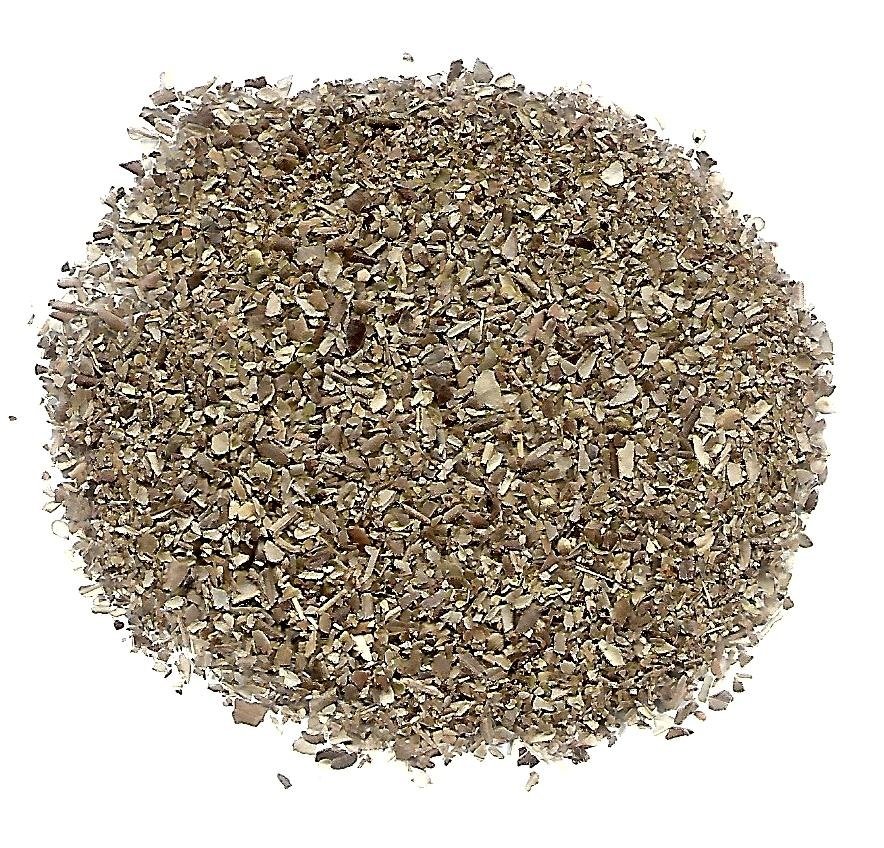
Key Takeaways: Greek vs. Mexican Oregano
Q: Are Greek and Mexican oregano the same?
A: No. Greek oregano comes from the mint family, while Mexican oregano is from the verbena family. They have different flavors, aromas, and culinary uses.
Q: How do their flavors differ?
A: Greek oregano is earthy, savory, and slightly minty. Mexican oregano is bold, citrusy, and pungent, often with hints of licorice or anise.
Q: Which dishes suit Greek oregano?
A: Mediterranean recipes—pizza, pasta, tomato sauces, grilled meats, roasted vegetables, and Greek salads.
Q: Which dishes suit Mexican oregano?
A: Latin, Tex-Mex, and Southwestern cuisine—chili, tacos, enchiladas, salsas, beans, moles, and pozole.
Q: Is one oregano stronger than the other?
A: Yes. Mexican oregano is stronger and more pungent. Use half the amount when substituting it for Greek oregano.
Q: Can I substitute one for the other?
A: Sometimes, but with caution. Greek oregano can replace Mexican oregano in milder dishes with added lime or coriander. Mexican oregano can overpower delicate Mediterranean dishes, so use sparingly.
Q: Are there health benefits?
A: Both are antioxidant-rich and have digestive and antimicrobial properties. Greek oregano is high in carvacrol and thymol; Mexican oregano contains limonene and thymol with a citrusy boost.
Q: Where can I buy them?
A: Greek oregano is widely available in supermarkets. Mexican oregano is best found in Latin markets, specialty spice shops, or online. Whole leaves preserve flavor better than powders.
What Is Greek Oregano?
Greek oregano (Origanum vulgare subsp. hirtum) is often considered the gold standard of oregano. A member of the mint family (Lamiaceae), it has deep roots in Mediterranean culture and cuisine.
This hardy perennial thrives in the sunny, rocky landscapes of Greece, Turkey, and Italy, growing into a compact, bushy shrub about 1–2 feet tall. Its small, fuzzy green leaves are rich in aromatic oils, which release a powerful scent when crushed. In summer, the plant produces clusters of delicate white or pink flowers that draw in pollinators.
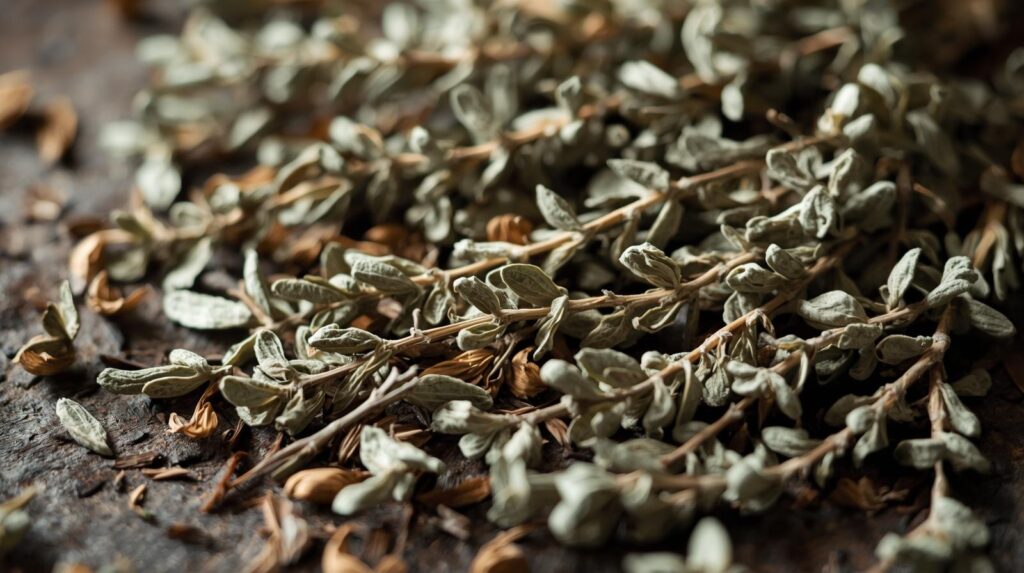
Flavor-wise, Greek oregano is bold yet balanced. It offers an earthy, peppery, and slightly pungent taste, often with hints of lemon or menthol. These distinctive notes make it a cornerstone of Mediterranean cooking, sprinkled over pizza, blended into tomato sauces, or rubbed onto grilled meats like souvlaki.
But Greek oregano has a history that goes beyond the kitchen. For centuries, it was valued as a natural remedy. Ancient Greeks used it to ease coughs, aid digestion, and support overall wellness, thanks to compounds like carvacrol and thymol, which carry both flavor and potential health benefits.
Today, Greek oregano remains one of the most widely recognized culinary herbs in the world, loved for its ability to bring depth and authenticity to Mediterranean dishes.
It pairs well with Mediterranean foods like tomatoes, garlic, eggplant, peppers, and feta cheese. Greek oregano is often called the “pizza herb” and is great for sauces, grilled meats, and vegetables.
What Is Mexican Oregano?
Mexican oregano (Lippia graveolens) may share a name with Greek oregano, but botanically, it is a completely different plant. Belonging to the verbena family (Verbenaceae), it is more closely related to lemon verbena and lemon balm than to mint.
Native to Mexico, Central America, and the south-western United States, Mexican oregano thrives in hot, arid climates where it grows as a shrubby perennial, often reaching 3–9 feet tall. Its oval, smooth leaves release a citrusy aroma when crushed, and the plant’s resilience makes it both drought-tolerant and well-suited for xeriscaping. In cooler regions, it is typically grown as an annual or overwintered indoors.
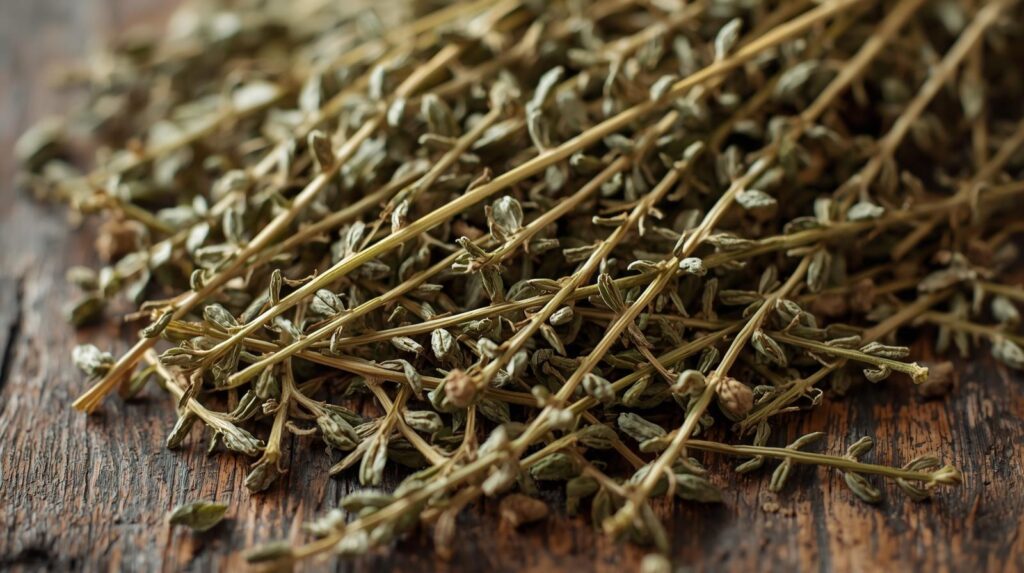
Flavor-wise, Mexican oregano is bolder and more complex than its Mediterranean counterpart. It delivers earthy, peppery, and slightly minty notes layered with citrus and a faint hint of anise. This robust profile is why it pairs so naturally with Mexican and Southwestern cooking, where bold flavors dominate. It complements chili peppers, cumin, beans, paprika, and slow-cooked meats, adding brightness and depth without overpowering the dish.
Beyond its role in the kitchen, Mexican oregano carries a long history of traditional use in Latin America, where it has flavored sauces, stews, and moles since pre-Columbian times. In many Mexican households, it’s simply called “oregano,” which often leads to confusion for cooks outside the region.
In short, Mexican oregano is not a “substitute” for Greek oregano but a powerful herb in its own right, perfectly suited to the spicy, hearty flavors of Latin American cuisine.
Physical Differences and Identification between Greek and Mexican Oregano
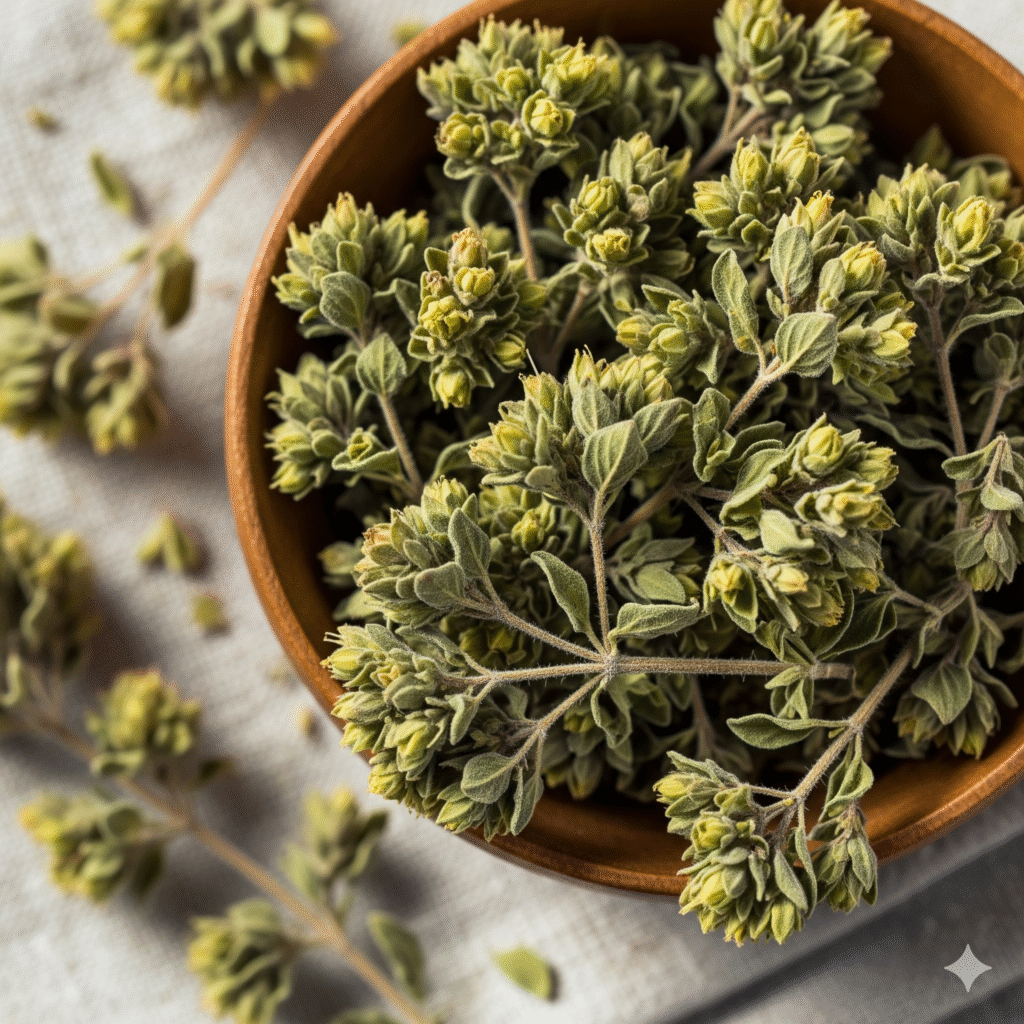
Greek and Mexican oregano can look similar, especially when dried, but there are key features that help you tell them apart:
Greek Oregano (Origanum vulgare)
- Leaves: Small, delicate, and slightly fuzzy.
- Texture: Soft and tender, even when dried.
- Aroma: Herbaceous, warm, and subtly minty.
- Growth Habit: Compact, bushy perennial, typically 1–2 feet tall, with small white or pink flowers in summer.
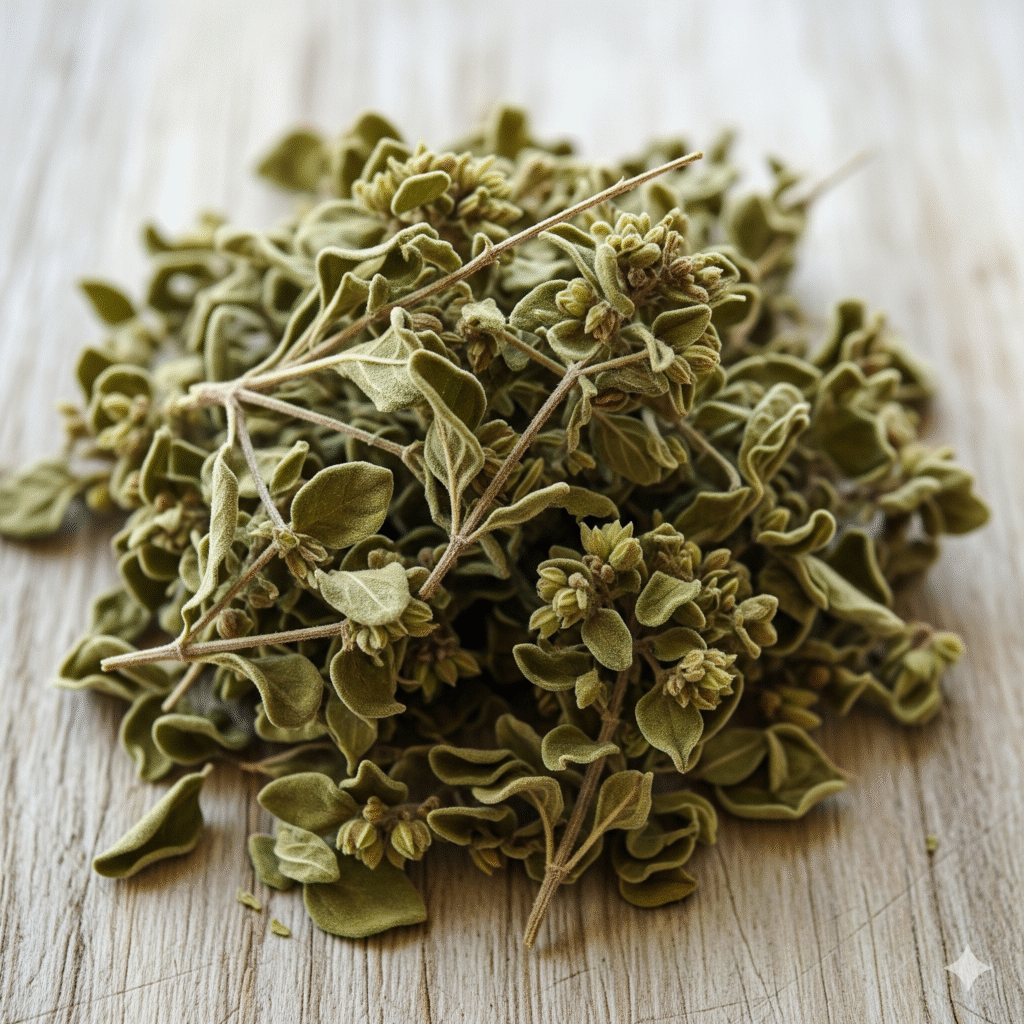
Mexican Oregano (Lippia graveolens)
- Leaves: Larger, tougher, and more textured than Greek oregano.
- Texture: Coarser, especially when dried.
- Aroma: Bold, citrusy, and slightly licorice-like.
- Growth Habit: Shrubby perennial that can reach 3–9 feet in warm climates, with smooth, oval leaves.
Quick Identification Tip:
- Fresh Leaves: Greek oregano feels soft and fragrant; Mexican oregano feels sturdier with a citrusy punch.
- Dried Herb: Look for texture—Mexican oregano is coarser, while Greek oregano is finer and more uniform. Smelling the herb is often the fastest way to distinguish between them.
Greek oregano vs Mexican oregano flavor
Although they share a name, Greek oregano and Mexican oregano taste worlds apart. Each brings its own personality to the plate, shaped by its origin and plant family.
Greek oregano delivers the flavor most people think of as “classic oregano.” It’s earthy, savory, and slightly peppery, with a warm herbaceous aroma that instantly evokes Mediterranean cooking. Subtle mint, lemon, and pine-like undertones round out its profile, while a mild bitterness gives depth without overwhelming the dish. Fresh Greek oregano tastes brighter and more vibrant, while the dried version intensifies into something deeper and more pungent. This makes it perfect for tomato-based sauces, grilled meats, and dishes that call for a comforting, balanced herbal note.
Mexican oregano, on the other hand, is bolder and more complex. Its flavor is earthy and robust, but layered with citrusy, lime-like brightness and a hint of floral sweetness. Many also notice a faint licorice or anise edge, which reflects its connection to the verbena family. Unlike Greek oregano, it’s less minty and more citrus-forward, with a punchy intensity that stands up beautifully to chilies, cumin, and smoky spices. Used generously, it can dominate a dish, so a little goes a long way.
In short:
- Greek oregano comforts with warmth, balance, and Mediterranean depth.
- Mexican oregano excites with bold, citrusy brightness and a touch of licorice.
Which One Is Stronger or More Pungent?
- Use Greek oregano when you want warmth and balance.
- Use Mexican oregano when you need a punchy, citrus-forward herb that won’t get lost among bold spices.
Culinary Uses Of Greek and Mexican Oregano
Greek oregano is the familiar oregano found in most spice racks, and it is a cornerstone of Mediterranean cooking. Its savory, earthy depth pairs beautifully with tomatoes, olive oil, and grilled meats, making it indispensable in Italian and Greek cuisine. You’ll find it in pizza and pasta sauces, Greek salads with feta, roasted lamb or chicken, grilled vegetables, hearty soups, and casseroles like moussaka.
Fresh Greek oregano adds a bright, herbal finish when sprinkled as a garnish, while dried oregano (added early in cooking) infuses long-simmered sauces and stews with robust flavor. Its mild bitterness and peppery notes balance rich, acidic ingredients, ensuring dishes taste grounded and authentic.
Mexican oregano, by contrast, is tailor-made for Latin American and Tex-Mex cooking, where bold, spicy flavors dominate. Its citrusy brightness and subtle anise edge cut through the richness of ingredients like beans, chilies, and slow-cooked meats. It’s an essential addition to tacos, enchiladas, pozole, chili con carne, black beans, moles, adobo marinades, and salsas.
Unlike Greek oregano, which blends quietly into Mediterranean dishes, Mexican oregano asserts itself. A pinch can transform a pot of beans or a salsa, standing up to cumin, chili powder, garlic, and smoky peppers. It’s even used in herbal teas and infusions, where its citrus-floral notes shine.
In short:
- Greek oregano brings warmth, balance, and Mediterranean authenticity.
- Mexican oregano delivers bold, zesty brightness that thrives in spicy, earthy dishes.
Can You Substitute One for the Other?
The short answer: yes—but with caution. Greek and Mexican oregano may share a name, but their flavors are distinct enough that swapping them can dramatically change a dish.
Substituting Greek oregano for Mexican oregano
This is the more forgiving swap. If a recipe calls for Mexican oregano and you only have Greek on hand, you can use it. But you’ll need to increase the amount slightly since Greek oregano is milder. The result will lack the citrusy brightness and faint licorice notes that Mexican oregano provides. To bridge the gap, try adding a squeeze of lime juice, some lemon zest, or even a pinch of coriander seed alongside the Greek oregano.
Substituting Mexican oregano for Greek oregano
This swap is trickier. Mexican oregano is stronger, bolder, and more pungent, often nearly twice as potent. Its citrus and anise-like undertones can overwhelm the delicate balance of Mediterranean dishes like pasta sauces, salads, or focaccia. If you do attempt the substitution, use half the amount and taste as you go. But for a closer match in Mediterranean cooking, dried marjoram (a close relative of Greek oregano) is usually a better stand-in.
When substitutions work:
- Greek oregano can step in for Mexican in mild dishes like vegetable soups or bean stews.
- Mexican oregano can occasionally complement hearty Mediterranean dishes such as lamb or beef stews, where its boldness won’t clash.
When they don’t:
- Mexican oregano is too overpowering for fresh Mediterranean salads or delicate pasta dishes.
- Greek oregano falls flat in vibrant salsas or spicy chili, where the citrus punch of Mexican oregano is essential.
Pro tip: Always start small when substituting. Taste-test as you cook to keep flavors balanced.
Culinary Pairings: Where Each Herb Shines
- Tomato-Based Sauces: Essential for pizza, marinara, pasta sauces, and tomato-based soups.
- Grilled Meats: Ideal in marinades for lamb, chicken, or beef—think classic Greek souvlaki.
- Roasted Vegetables: A sprinkle over potatoes, eggplant, or bell peppers before roasting adds depth and aroma.
- Salads: Brings the signature flavor to Greek salad (Horiatiki) and pairs beautifully with olive oil and lemon.
- Chili and Stews: Holds its own against chili powder, cumin, and garlic in chili con carne, pozole, and bean stews.
- Tacos and Enchiladas: Adds a bright, zesty note to meat fillings and enchilada sauces.
- Salsas and Bean Dishes: Enhances homemade salsas and authentic bean recipes with a robust, citrus-forward flavor.
- Greek oregano can substitute in Mexican dishes with a squeeze of lime or a pinch of coriander to mimic brightness.
- Mexican oregano can replace Greek oregano sparingly in Mediterranean dishes, but too much may overwhelm delicate flavors.
Greek vs. Mexican Oregano: Quick Comparison
Feature | Greek Oregano (Origanum vulgare subsp. hirtum) | Mexican Oregano (Lippia graveolens) |
Origin | Mediterranean (Greece, Italy, Turkey) | Mexico, Central America, Southwestern U.S. |
Plant Family | Mint family (Lamiaceae) | Verbena family (Verbenaceae) |
Flavor | Earthy, savory, slightly peppery with subtle lemon, pine, or mint notes | Bold, citrusy, pungent with hints of licorice or anise |
Aroma | Warm, herbaceous, balanced | Bright, assertive, citrus-forward |
Strength / Pungency | Milder, versatile | Stronger, nearly twice as potent |
Culinary Uses | Pizza & pasta sauces, tomato-based soups, roasted vegetables, grilled meats, Greek salads, Mediterranean casseroles | Chili, tacos, enchiladas, pozole, salsas, beans, moles, Tex-Mex dishes |
Best Pairings | Basil, thyme, rosemary, garlic, olive oil, lemon | Cumin, chili peppers, garlic, cilantro, lime |
Substitution Notes | Can substitute for Mexican oregano in milder dishes with lime or coriander | Can replace Greek oregano sparingly; use half the amount; marjoram is a better Mediterranean substitute |
Bottom Line:
- Greek oregano comforts with earthy warmth and balance.
- Mexican oregano excites with bold, citrus-forward brightness.
Recipe Ideas Greek vs. Mexican Oregano:
Greek Oregano in the Kitchen
Greek oregano is your go-to herb for Mediterranean classics, adding earthy warmth and herbaceous depth to every dish.
Try it in:
- Greek Salad (Horiatiki): Toss 1 tsp dried Greek oregano with tomatoes, cucumbers, feta, and olive oil for authentic flavor.
- Pizza and Pasta: Sprinkle over marinara or mix into dough for herby flatbreads.
- Grilled Meats: Rub lamb chops with 1 tsp Greek oregano, garlic, and lemon zest for a gyro-inspired marinade.
Recipe Idea: Lemon-Herb Grilled Chicken
- Marinate 4 chicken breasts with 2 tbsp olive oil, 1 tbsp lemon juice, 1 tsp dried Greek oregano, 2 minced garlic cloves, and salt.
- Grill over medium heat for 6–8 minutes per side.
- Serve with roasted potatoes and a sprinkle of fresh oregano for extra flair.
Mexican Oregano in the Kitchen
Mexican oregano’s bold, citrusy flavor shines in Latin American and Tex-Mex dishes, adding depth and brightness to spicy, hearty meals.
Try it in:
- Chili and Stews: Add 1 tsp to chili con carne or pozole for rich, layered flavor.
- Salsas and Guacamole: Mix ½ tsp into fresh salsa or guacamole for a zesty twist.
- Tacos and Enchiladas: Simmer in sauces for carne asada, birria, or enchiladas.
Recipe Idea: Authentic Birria Tacos
- Simmer 2 lbs beef chuck with 2 tsp dried Mexican oregano, 3 guajillo chiles, 1 tsp cumin, and 4 cups broth for 3 hours.
- Shred the meat, dip tortillas in the broth, and fry with meat and cheese.
- Serve with cilantro, onion, and extra broth for dipping.
What are Health Benefits of Oregano
- Rich in Antioxidants: Both varieties contain compounds that help combat oxidative stress, supporting overall cellular health.
- Digestive Support: Oregano has traditionally been used to aid digestion, soothe minor stomach discomfort, and enhance appetite.
- Antimicrobial Properties: Both contain natural compounds that exhibit antibacterial and antifungal activity, helping preserve food and supporting wellness.
- Contains carvacrol and thymol, phenolic compounds studied for their antimicrobial and anti-inflammatory effects.
- Historically used in Mediterranean regions to treat coughs, colds, and minor wounds.
- Can be brewed in a small amount of tea to help soothe the digestive tract.
- Rich in limonene and thymol, contributing to a citrus-forward aroma and potential digestive benefits.
- Traditionally used in Mexico to support respiratory and digestive health, often in teas or infused in broths.
- Its essential oils provide anti-inflammatory and antimicrobial effects, complementing the bold flavors of Latin American cuisine.
- Greek oregano: antimicrobial, anti-inflammatory, and soothing for digestive or respiratory issues.
- Mexican oregano: digestive support, mild anti-inflammatory benefits, and a vitamin C boost from its citrusy compounds.
- Both: antioxidants, digestive aids, and natural antimicrobial properties.
Buying & Sourcing Oregano
Selecting the right oregano starts with knowing where to find it and how to choose quality herbs.
Greek Oregano (Origanum vulgare)
- Availability: Widely found in most supermarkets, either dried in jars or fresh in the produce section. It may simply be labeled as “oregano,” but check for terms like “Mediterranean oregano” or the botanical name Origanum vulgare to ensure authenticity.
- Buying Tip: Whole leaves retain aroma and flavor better than pre-ground powders. Crush fresh or dried leaves just before use for the best results.
- Aroma Check: Smell for a minty, herbaceous fragrance. It is a hallmark of true Greek oregano.
Mexican Oregano (Lippia graveolens)
- Availability: Less common in general supermarkets. Look in Latin American grocery stores, specialty spice shops, or online retailers. It may be labeled as “Mexican oregano” or include the botanical name Lippia graveolens.
- Buying Tip: Whole leaves or coarse crumbles are preferred over finely ground powder to preserve the bold citrusy flavor.
- Aroma Check: True Mexican oregano has a bright, citrusy, and slightly licorice-like scent, distinct from Greek oregano.
Pro Tip: If possible, smell the herb before buying. Greek oregano should feel earthy and minty, while Mexican oregano should hit with citrusy brightness.
Famous Recipes Featuring Greek Oregano and Mexican Oregano
Oregano is a kitchen superstar, but Greek and Mexican varieties bring distinct flavors to the table. Greek oregano adds earthy, herbaceous, and slightly minty warmth to Mediterranean dishes, while Mexican oregano delivers a bold, citrusy, and pungent punch perfect for Latin American cuisine.
Below are some famous recipes that highlight each herb’s unique character:
Greek Oregano Recipes
Greek oregano’s savory, peppery notes are the backbone of Mediterranean cuisine. Here are three famous dishes that highlight its magic.
1. Classic Greek Salad (Horiatiki)
Description: This vibrant Greek salad is a staple in Mediterranean cuisine, bursting with fresh vegetables, creamy feta, and briny olives. Greek oregano ties the flavors together, adding earthy, minty notes that complement the tangy dressing without overpowering the ingredients.Ingredients (Serves 4):- 4 medium tomatoes, cut into wedges
- 1 cucumber, sliced into half-moons
- 1 red onion, thinly sliced
- 1 green bell pepper, sliced
- 200g feta cheese, cubed or crumbled
- 1/2 cup Kalamata olives
- 1 tsp dried Greek oregano
- 1/4 cup extra-virgin olive oil
- 2 tbsp red wine vinegar
- Salt and black pepper to taste
- In a large bowl, combine tomatoes, cucumber, onion, bell pepper, and olives.
- Drizzle with olive oil and vinegar. Sprinkle Greek oregano, salt, and pepper over the top.
- Toss gently to coat. Add feta on top or mix in lightly.
- Serve immediately with crusty bread to soak up the juices.
2. Souvlaki (Greek Pork Skewers)
Description: A beloved street-food classic in Greece, these grilled pork skewers are marinated with Greek oregano for a robust, earthy, and herbaceous flavor. The oregano pairs perfectly with lemon and garlic, balancing the richness of the pork and adding authentic Mediterranean depth.Ingredients (Serves 4):- 5 lbs pork shoulder, cut into 1-inch cubes
- 3 tbsp olive oil
- 2 tbsp lemon juice
- 2 garlic cloves, minced
- 1 tbsp dried Greek oregano
- 1 tsp salt
- 1/2 tsp black pepper
- Wooden or metal skewers
- Tzatziki and pita bread for serving
- In a bowl, whisk together olive oil, lemon juice, garlic, Greek oregano, salt, and black pepper.
- Add the pork cubes, toss to coat thoroughly, and marinate in the fridge for 2–4 hours.
- Thread the pork onto skewers. Preheat grill to medium-high heat.
- Grill skewers for 8–10 minutes, turning occasionally, until pork reaches an internal temperature of 145°F.
- Serve immediately with tzatziki and warm pita bread.
3. Moussaka
Description: Moussaka is Greece’s answer to lasagna—a layered casserole of eggplant and spiced meat sauce topped with creamy béchamel. Greek oregano infuses the meat sauce with earthy, peppery depth, perfectly balancing the richness of the lamb or beef and the creamy topping.Ingredients (Serves 6):- 2 large eggplants, sliced 1/4-inch thick
- 1 lb ground lamb or beef
- 1 onion, finely chopped
- 2 garlic cloves, minced
- 1 can (14 oz) crushed tomatoes
- 1 tbsp tomato paste
- 1 tsp dried Greek oregano
- 1/2 tsp ground cinnamon
- 1/4 cup red wine (optional)
- Salt and pepper to taste
- 3 tbsp olive oil
- 4 tbsp butter
- 4 tbsp flour
- 2 cups milk
- 1 egg
- 1/2 cup grated Parmesan
- Sprinkle eggplant slices with salt; let sit 30 minutes to release moisture. Pat dry.
- Brush eggplant with olive oil and bake at 400°F for 20 minutes, flipping halfway.
- In a skillet, cook onion and garlic in 1 tbsp olive oil until soft. Add ground meat; cook until browned.
- Stir in tomatoes, tomato paste, oregano, cinnamon, wine, salt, and pepper. Simmer 15 minutes.
- For béchamel, melt butter, stir in flour, and cook 1 minute. Gradually add milk, stirring until thickened. Remove from heat; whisk in egg and Parmesan.
- Layer eggplant, meat sauce, and béchamel in a greased 9×13 dish. Repeat layers.
- Bake at 350°F for 45 minutes until golden. Let rest 10 minutes before serving.
Mexican Oregano Recipes
1. Chili Con Carne
Description: This hearty Tex-Mex chili is a crowd-pleaser, with rich beef, beans, and spices. Mexican oregano brings a bold, citrusy, and slightly smoky flavor, cutting through the richness and giving the dish authentic depth.Ingredients (Serves 6):- 2 lbs ground beef
- 1 onion, chopped
- 2 garlic cloves, minced
- 1 can (15 oz) kidney beans, drained
- 1 can (15 oz) diced tomatoes
- 2 tbsp tomato paste
- 2 tsp dried Mexican oregano
- 1 tbsp chili powder
- 1 tsp ground cumin
- 1 cup beef broth
- 1 jalapeño, seeded and chopped (optional)
- Salt and pepper to taste
- 2 tbsp vegetable oil
- Heat vegetable oil in a large pot over medium heat. Cook onion and garlic until soft and fragrant.
- Add ground beef and cook until browned, breaking it up with a spoon.
- Stir in chili powder, cumin, Mexican oregano, salt, and pepper. Cook for 1 minute to release aromas.
- Add diced tomatoes, tomato paste, beans, broth, and jalapeño. Bring to a boil, then reduce heat and simmer for 30–40 minutes, stirring occasionally.
- Serve hot with sour cream, shredded cheese, or fresh cilantro.
2. Salsa Roja
Description: Salsa Roja is a classic Mexican red salsa with a vibrant, zesty flavor. Mexican oregano adds citrusy, floral notes, perfectly complementing the smoky chiles and tangy lime. Ideal for tacos, chips, or grilled meats, this salsa brings authentic Mexican flair to any meal.Ingredients (Makes 2 cups):- 4 Roma tomatoes
- 1/2 onion, quartered
- 2 dried guajillo chiles, stemmed and seeded
- 1 garlic clove
- 1/2 tsp dried Mexican oregano
- 1/2 tsp salt
- 1 tbsp lime juice
- 1/4 cup cilantro, chopped
- Boil tomatoes, onion, and guajillo chiles in water for 10 minutes until soft.
- Transfer to a blender with garlic, Mexican oregano, salt, and lime juice. Blend until smooth.
- Stir in cilantro. Adjust seasoning to taste.
- Chill for 30 minutes before serving.
3. Chicken Mole Poblano
Description: Mole Poblano is a rich, complex Mexican classic, combining chiles, chocolate, nuts, and spices into a deeply flavorful sauce. Mexican oregano adds a bright, citrusy edge, balancing the richness of the chocolate and chiles for a perfectly harmonious dish.Ingredients (Serves 4):- 4 chicken thighs, bone-in, skin-on
- 2 dried ancho chiles, stemmed and seeded
- 1 dried pasilla chile, stemmed and seeded
- 1/4 cup sesame seeds
- 1/4 cup almonds
- 1/4 cup raisins
- 1/2 onion, chopped
- 2 garlic cloves
- 1 tsp dried Mexican oregano
- 1/2 tsp ground cinnamon
- 1/4 tsp ground cloves
- 2 oz Mexican chocolate, chopped
- 2 cups chicken broth
- 2 tbsp vegetable oil
- Salt to taste
- Toast chiles, sesame seeds, and almonds in a dry skillet until fragrant. Set aside.
- In a pot, cook chicken in boiling water for 20 minutes. Reserve broth.
- Blend chiles, sesame seeds, almonds, raisins, onion, garlic, Mexican oregano, cinnamon, cloves, and 1 cup broth until smooth.
- Heat oil in a large skillet. Add sauce; cook 5 minutes. Stir in chocolate and remaining broth. Simmer 15 minutes.
- Add chicken to sauce; simmer 10 minutes until coated. Season with salt.
- Serve with rice and sprinkle with sesame seeds.
4. Authentic Birria Tacos
Description: These rich, flavorful tacos are a classic of Mexican cuisine. Mexican oregano adds bold, citrusy, and slightly licorice notes that enhance the slow-cooked beef, chiles, and spices. Served with a warm, broth-dipped tortilla, they’re perfect for a comforting, authentic meal.Ingredients (Serves 4–6):- 2 lbs beef chuck, cut into large chunks
- 2 tsp dried Mexican oregano
- 3 dried guajillo chiles, seeds removed and rehydrated
- 1 tsp ground cumin
- 4 cups beef or chicken broth
- 1 onion, chopped
- 4 garlic cloves, minced
- 12 corn tortillas
- 1 cup shredded cheese (optional)
- Fresh cilantro and diced onion, for garnish
- Prepare the chiles: Rehydrate guajillo chiles in hot water for 15 minutes. Blend into a smooth paste with 1/4 cup of broth.
- Cook the beef: In a large pot, combine beef, chile paste, Mexican oregano, cumin, onion, garlic, and remaining broth. Bring to a simmer, cover, and cook for 3 hours until meat is tender.
- Shred the meat: Remove beef from the pot and shred. Strain the cooking liquid (consommé) and reserve for dipping.
- Assemble the tacos: Dip tortillas in the reserved broth, fill with shredded beef, add cheese if desired, and cook on a hot skillet until lightly crisp.
- Serve: Garnish with fresh cilantro and diced onion. Serve extra consommé on the side for dipping.
Tips for Cooking with Greek and Mexican Oregano
- Greek Oregano: Add early in cooking for sauces or marinades to let its flavor meld. Use fresh for garnishes, dried for intensity.
- Mexican Oregano: Add toward the end of cooking to preserve its citrusy brightness. Start with 1/2 tsp in new recipes, as it’s potent.
- Storage: Keep dried oregano in airtight containers away from light for up to a year. Fresh lasts 1–2 weeks refrigerated.
- Substitution: Swap carefully—use half the Mexican oregano for Greek, and add lemon zest or marjoram to mimic their counterparts.
Frequently Asked Questions (FAQ)
Q: Is Greek oregano the same as Italian oregano?
A: Greek oregano is a type of Mediterranean oregano (Origanum vulgare subsp. hirtum) and is considered the “true” oregano. Italian oregano often includes blends with other Mediterranean herbs, so Greek oregano is usually more aromatic and robust.
Q: Can I use Mexican oregano in Italian dishes?
A: Use caution. Mexican oregano’s bold, citrusy, and slightly licorice-like flavor can overpower delicate Mediterranean flavors. If you must, use it sparingly and consider adding a pinch of marjoram to balance.
Q: Should I buy fresh or dried oregano?
A: Both Greek and Mexican oregano can be used fresh or dried. Whole leaves retain aroma better than powdered forms, and crushing them just before use releases their full flavor.
Q: How strong is Mexican oregano compared to Greek oregano?
A: Mexican oregano is generally twice as potent as Greek oregano, so recipes calling for Mexican oregano often require less than Greek oregano.
Q: Are there health benefits to oregano?
A: Yes. Both herbs are antioxidant-rich and have antimicrobial and digestive-supporting properties. Greek oregano is high in carvacrol and thymol, while Mexican oregano contains limonene and thymol with a citrusy boost.
Q: Can oregano be grown at home?
A: Yes. Greek oregano prefers sunny, rocky Mediterranean-like conditions, while Mexican oregano thrives in hot, dry climates. Both can be grown in pots or gardens if conditions are suitable.
Q: How do I tell Greek and Mexican oregano apart?
A: Fresh Greek oregano has small, delicate, slightly fuzzy leaves and a minty, herbaceous aroma. Mexican oregano has larger, tougher leaves with a bold, citrusy, slightly licorice scent. Dried Mexican oregano is coarser than Greek oregano.
Q: Can children or pets safely consume oregano?
A: In culinary amounts, both Greek and Mexican oregano are safe. Large amounts of essential oils, however, can be irritating, so stick to normal recipe quantities.
Conclusion
Greek oregano and Mexican oregano may share a name, but they are distinct herbs with unique flavors, aromas, and culinary roles.
- Greek oregano (Origanum vulgare) is the essence of the Mediterranean. Its earthy, savory, and slightly minty profile makes it perfect for tomato sauces, pizza, pasta, grilled meats, roasted vegetables, and Greek salads. It brings warmth and subtle complexity without overpowering a dish.
- Mexican oregano (Lippia graveolens) is bold, vibrant, and citrus-forward. Its pungent, slightly licorice-like flavor enhances chili, beans, tacos, enchiladas, salsas, and other Latin and Tex-Mex dishes, standing up to robust spices and hearty ingredients.
Rather than thinking of them as interchangeable, consider each oregano as a unique culinary tool—one designed for Mediterranean authenticity, the other for Latin-inspired brightness. Understanding these differences allows you to choose the right oregano for each dish, ensuring your cooking is both flavorful and authentic.









